READY TO GET STARTED?
REQUEST A FREE ESTIMATE
Fill out the form below or call (888) 466-7849 for a free, no-obligation estimate.

The South is known for many things like warm weather, sweet tea, and southern hospitality. Unfortunately, the south is also known for another thing – mosquitoes! Mosquitoes thrive in warm, humid climates like we have here in the southern United States. As the weather warms, mosquito season begins and peaks in the mid-summer months. Mosquitoes can breed in less than 1 inch of water so the South offers them a multitude of habitats to expand their populations.
Mosquito bites cause irritation and itching of the skin. Besides this nuisance, mosquitoes can also transmit diseases that can threaten the health of both humans and animals. Here are some of the most common diseases that can be spread by mosquitoes:
Now that you know some of the diseases you can contract from mosquitoes what can you do to prevent them? Avoiding mosquito bites is the #1 way to prevent all of the diseases mentioned above. Check out these tips to avoid mosquito bites and help keep them away from yourself and your home.
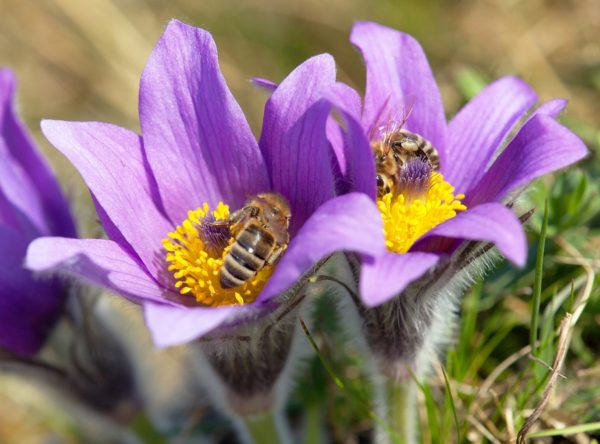
Pollination is when pollen grains are transferred from one flower to another. Pollination allows plants to produce seeds which is how they reproduce. Pollinators are animals and insects that are responsible for helping with the pollination of over 80% of the world’s flowering plants. Animal pollinators are vital in the reproduction of flowering plants and the production of most fruits and vegetables. They accomplish this by getting their food from flowers (think nectar and pollen) and collecting pollen on their bodies in the process. They then move on to another plant and leave the hitchhiking pollen behind, providing the new plants with the pollen they need to reproduce.
Some of the most common animal pollinators that come to mind are bees and butterflies. But did you know there are several other animals you might not have known who are expert pollinators? Here are a few animal pollinators along with the types of plants they pollinate:
Ants love nectar. Because they don’t fly they have to crawl into flowers to get to this nectar. Once inside the flower, pollen sticks to their bodies, allowing them to transfer it to other flowers when they move on. Tropical plants have nectar outside their flowers to attract ants to them. They then use these ants as “protectors” from other insects.
Ants pollinate flowers that:
Bats are known as one of the “night shift” pollinators. They are most common in tropical and desert climates. They are prevalent in the southwest US, Africa, Southeast Asia, and the Pacific Islands as pollinators. In fact, mangoes, bananas, and guavas depend on bats for pollination. In the US and Central America, the agave plant (which is used to make tequila) and the Saguaro cactus are also dependent on bats for pollination.
Bats pollinate flowers that:
Bees are known as the “champion” pollinators and are also the most common. There are over 4000 species of bees in the United States alone. Bees purposefully visit flowers to collect pollen and nectar which they use to feed themselves and their young. Many flowers that bees pollinate have an area of low UV reflection near their centers. Humans can’t see UV reflection so we don’t notice them. Bees, however, use them as a target to guide them to the center of the flower.
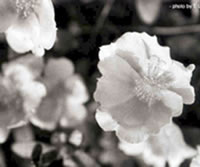
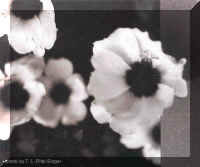
Human Perspective Bee Perspective
Photos courtesy of Apalachicola National Forest.
Bees pollinate flowers that:
Beetles were among the first insects to visit flowers. They are important pollinators for ancient species like magnolias. They are known as “mess and soil” pollinators because they eat through flower petals to get to the nectar and then defecate inside the flowers. Fossil records show that beetles were abundant as far back as 200 million years ago.
Beetles pollinate flowers that:
Birds are important pollinators of wildflowers. Hummingbirds are the most important bird pollinators in the United States. In the eastern United States there is only one species that acts as a pollinator and that is the ruby throated hummingbird. Hummingbirds have good eyesight and are extremely attracted to red flowers. They use their long bills to collect nectar and the pollen then dusts their heads and faces.
Hummingbirds pollinate flowers that:
Butterflies are very active during the day. Their body structure doesn’t allow them to pick up as much pollen as bees and other insects but they can see red where bees can’t. Butterflies produce scents that attract other butterflies of the opposite sex. This scent they produce smells like the flowers that they are attracted to.
Butterflies pollinate flowers that:
Two winged pollinators include flies, gnats, and mosquitoes. These insects aren’t as fuzzy as bees so they don’t pick up as much pollen. They are still, however, important pollinators, especially for some species of orchids.
Two-winged insects pollinate flowers that:
Moths are the other member of the pollination “night shift” along with bats. Some moths are also active as pollinators during the day. The yucca plant is one important plant that is dependent on moths for survival.
Moths pollinate flowers that:
Wasps look like bees but have much less hair. This makes them less efficient as pollinators because pollen is less likely to stick to their bodies. Wasps need pollen and nectar for energy. Fig wasps are responsible for pollinating almost 1000 species of figs.
Wasps pollinate flowers that:
There are several other uncommon pollinators. Lizards, geckos, and skinks can be pollinators. They climb inside flowers to drink the nectar and the pollen then sticks to their scales. Lemurs and possums can also pollinate. They use their snouts and tongues to get nectar from plants and then have their faces and snouts dusted with pollen.
We consider most of the animals and insects that are pollinators as nuisances and pests. As much as we don’t want them in our homes, they do play a very critical role in the survival of plants and food. It is important that while we should take steps to prevent them from invading our homes, we should be very careful with how we handle them should they make themselves at home in our area. If you suspect you have a problem with any of these pollinators, contact a professional pest control company who can give you a thorough evaluation and provide you with a treatment plan that both benefits you and protects these important species.
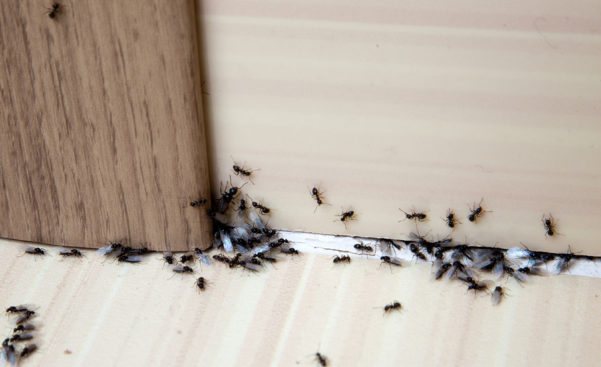
Ants have been named the #1 nuisance pest in the United States. Ants are social insects that live in colonies. They enter our homes looking for food and shelter. Ants primarily look for foods that are sugary and sweet or greasy and protein-based. Once they find food, they leave a pheromone trail behind that other ants will follow.
There are over 700 species of ants in the United States. At least 20 of these species are known to infect homes and other structures. There are several species of ants that are common to our area. The 5 most common are:
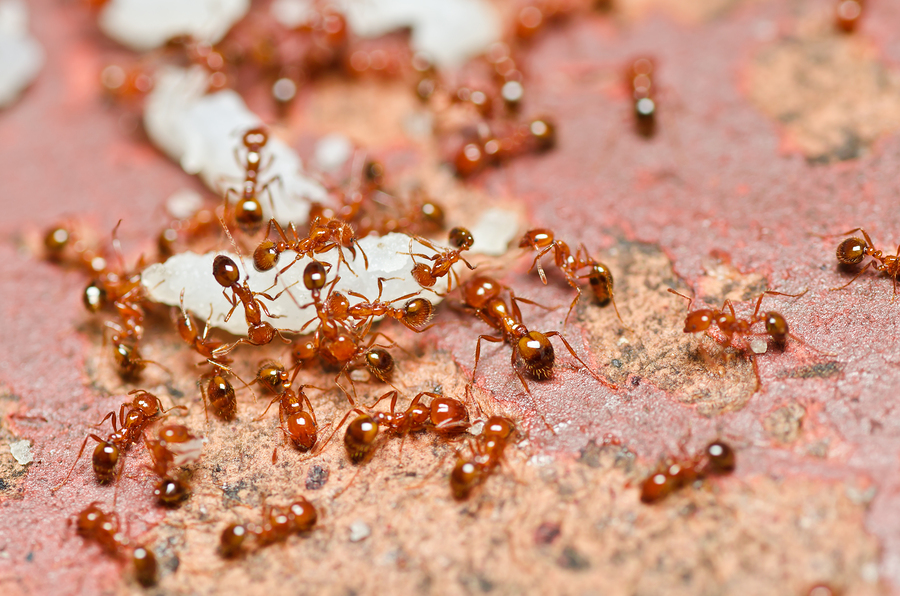
Fire ants build large, raised mounds. They prefer to nest in open, disturbed areas. They commonly nest in yards, fields, and roadsides. Fire ants are known to devastate local insect populations and small wildlife. They are also known to eliminate ground nesting bird species because they attack their newly hatched nestlings. Fire ants cause painful stings when they bite and will bite humans when threatened.

Carpenter ants are black in color. They are nocturnal and will exit their nests about 15 minutes after sunset in large numbers. Carpenter ants will invade kitchens in the summer months in search of food and water. They will invade structures if moisture is present. Carpenter ants can be very destructive to homes.
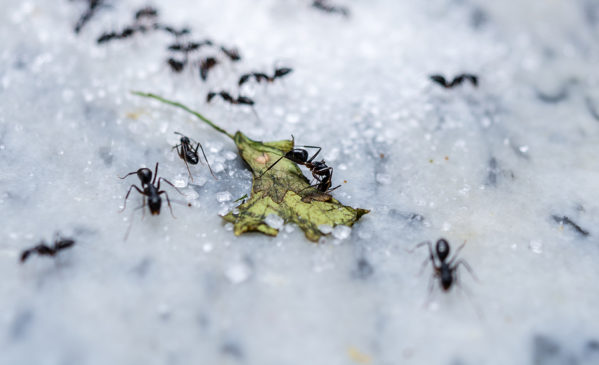
Argentine ants are light brown in color. They can easily squeeze through small cracks and holes. Argentine ants are known to set up colonies in the ground, in concrete walls, between boards and timbers, and among the belongings in your home. These ants are commonly seen in homes and will enter them in search of food and water. They are especially common during dry or hot weather or after a heavy rainfall. Argentine ants exhibit strong trailing behavior and can exist in high numbers. They move very quickly and are named among the world’s 100 worst animal invaders.
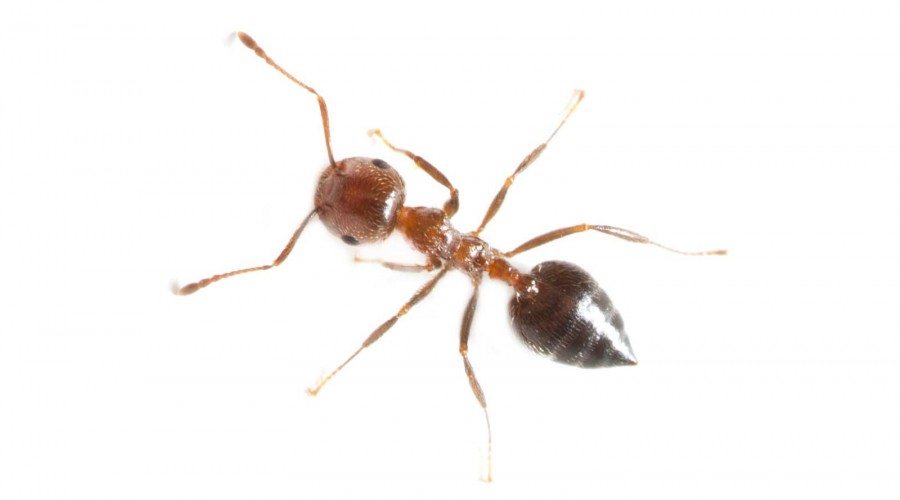
Acrobat ants are dark colored with a heart shaped abdomen that they will hold up in the air like a flag when disturbed. They will nest inside decaying wood. Acrobat ants form single file trails and leave behind small sawdust piles that are similar to those of carpenter ants. These ants produce a mild sting when they bite. Acrobat ants may move into your attic to incubate their eggs and will tunnel into water damaged wood.

Odorous house ants are dark colored and give off a strong rotten coconut smell when they are crushed. They exist in large numbers where there is plenty of moisture. They form trails similar to Argentine ants. Odorous house ants are one of the most difficult pests to get rid of from structures. They will often establish their colonies in earth filled porches and block walls.
Since ants are one of the most difficult pests to get rid of, what can you do to keep them from invading your home in the first place? Check out these tips for keeping the ants out of your personal space.
Eliminating ants can be an uphill battle. If they aren’t properly treated, the infestation can continue to grow despite your best efforts. Some ants like carpenter ants can cause serious property damage. Other ants like fire ants can pose a serious health threat to your family. Other species, while not necessarily a threat to your family, can still contaminate your food. If you suspect you have an ant problem call a professional pest control company. A professional can identify what species of ant you have which is the first step in eliminating these nuisance pests. They can also find the entry points and provide you with a thorough and comprehensive treatment plan.

The change of season from winter to spring brings warm weather, sunshine, and … bugs! This is the time of year when many pests emerge from overwintering and begin the mating process. Spring is also known as swarm season – because this is the time when termites and flying ants emerge in droves, sometimes in swarms of thousands! While flying ants can cause problems in and around your home, termites are much more common – and much more costly! How can you tell if those swarming insects are terrible termites or flying ants? Check out our handy reference below for the key differences between the two, as well as what to do if you have these pests swarming in or near your home.
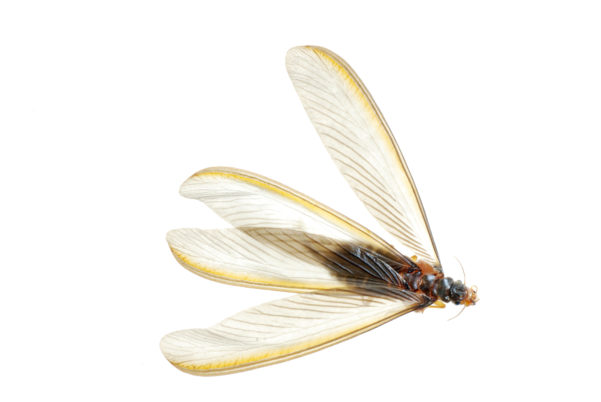
Termites usually swarm once a year for reproduction and expansion of their colonies. Swarms mark the official beginning of termite season. Subterranean termites swarm in spring and during the daytime. Drywood termites swarm in late summer and early fall. Dampwood termites swarm in the summer.
Termites swarm after their colony reaches a certain size and the weather conditions are optimal. The termites are attracted to light and are often found near windows and light fixtures. Swarming termites will try to squeeze through racks and crevices in your walls and foundations to try and reach open air. If you see swarming termites then there is a good chance there is a well-established termite colony in or near your home.
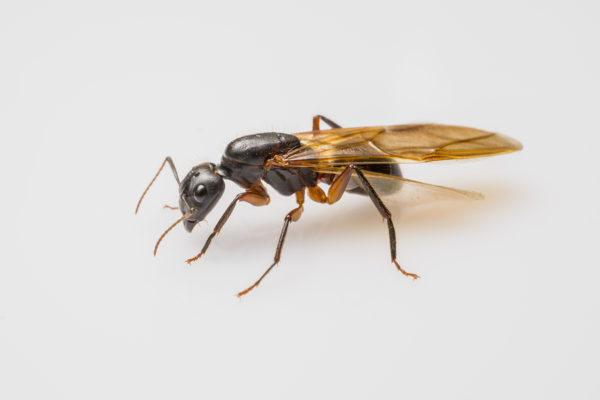
Flying ants will swarm in late spring and early summer. They have to have bright sunlight, low winds, high humidity, and warm temperatures to swarm. They prefer to swarm after there has been 3 to 5 days of rain.
Flying ants swarm for the same reasons as termites – to reproduce and expand their colonies. Flying ants don’t represent any greater threat to humans than their wingless counterparts. Flying ants aren’t as significant a threat to your home as termites but they can still cause damage. If you have flying ant swarms in your home there is a good chance you have an established ant colony in your walls.
So now that you can identify exactly what kind of pest is swarming around your home, what should you do next?
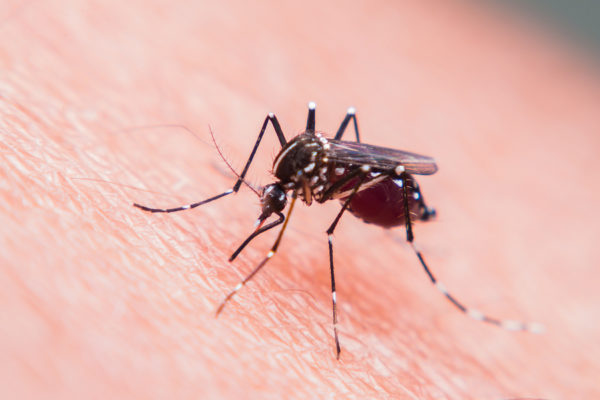
The best approach to controlling mosquitoes takes advantage of every life stage of a mosquito. This approach is known as an Integrated Pest Management approach (IPM). IPM employs a variety of different pest management techniques with an emphasis on pest prevention, pest reduction, and the elimination of habitats that can lead to pest infestations. A successful IPM strategy is made up of 4 different strategies:
If you suspect you have a problem with mosquitoes in or around your home, contact a professional pest control company who can provide you with a thorough inspection and comprehensive treatment plan.
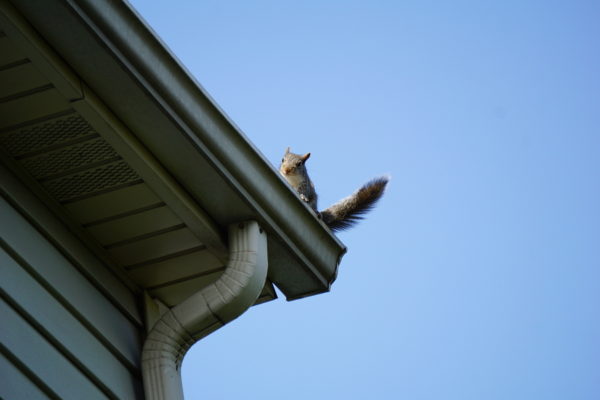
When the weather turns cold we tend to spend more time indoors enjoying the warmth from our heaters and blankets. Animals are no different! Fall and winter are the time of year when animals invade our homes in search of warmth, shelter, food and water. One of the most common pests we see in cold weather season is rodents. While rats and mice are the most common rodents we see in our area, they aren’t the only ones that can cause a problem. Chipmunks and squirrels can also cause significant damage to our homes if they get inside. Here are a few of the most common rodents in our area, as well as some tips to keep them from invading your home.
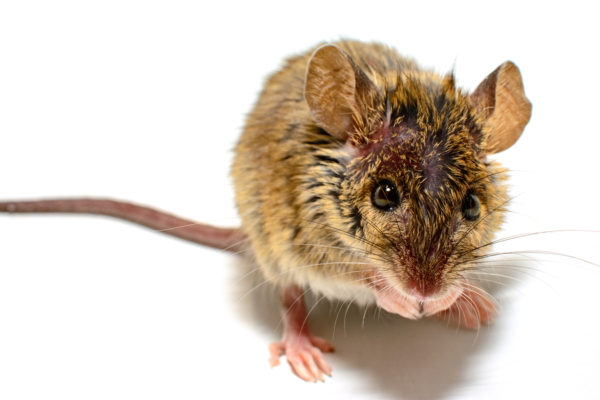
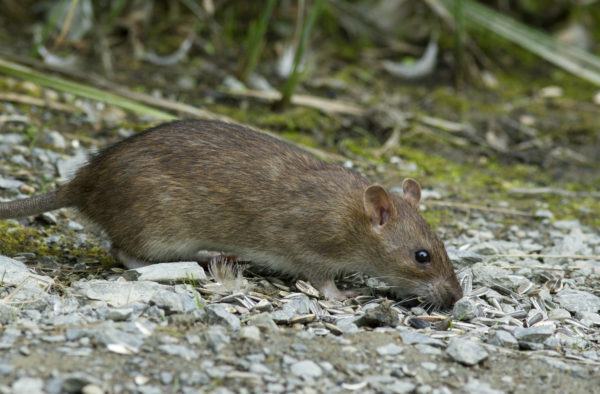
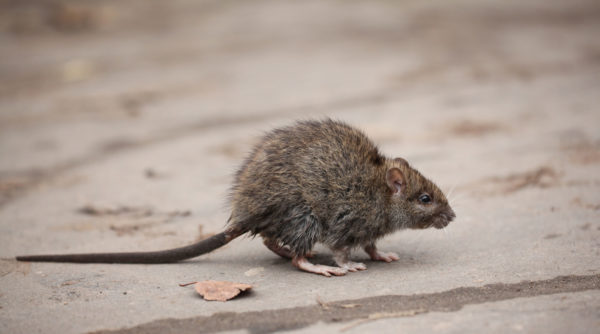
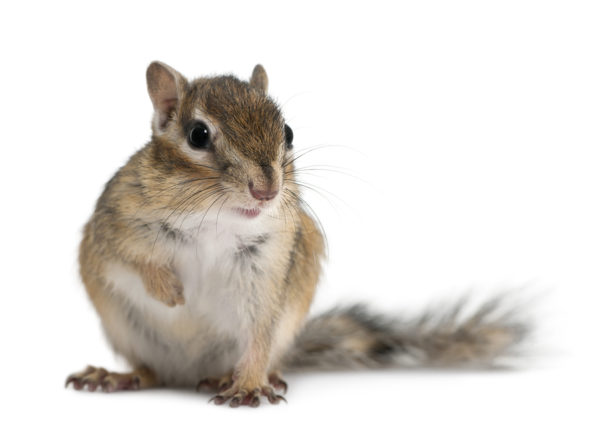
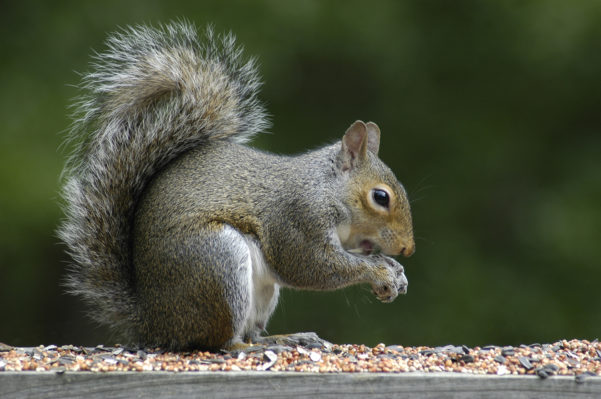
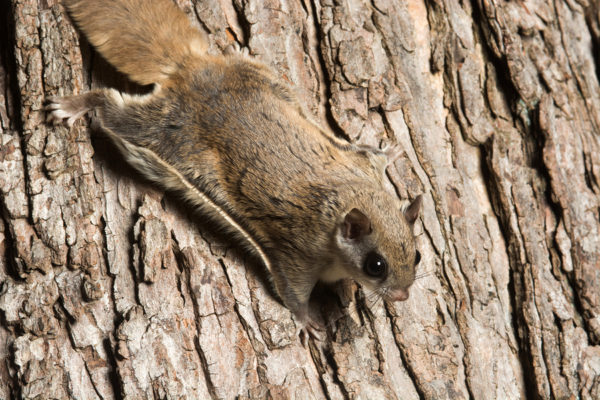
So now that you know some common rodents, what can you do to keep them from coming into your home? Check out these tips to prevent a rodent infestation.
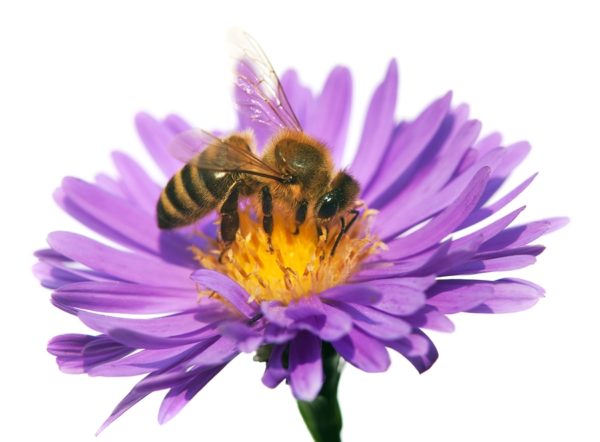
We’ve all been there before… you’re sitting in your house and you hear an incessant buzzing. All of a sudden something flies past your face! If you’re like most of us, your first thought it aghh! A bug in my house! Once you get over the initial shock of being dive bombed by this home invader, your next thoughts might be: What kind of bug is this? Is there more than one? How did it get in my house? How do I get rid of it? While we can’t answer all of your questions, we can help with a few. We’ve listed some of the most common flying pests below, as well as some tips to prevent them from getting into your home.
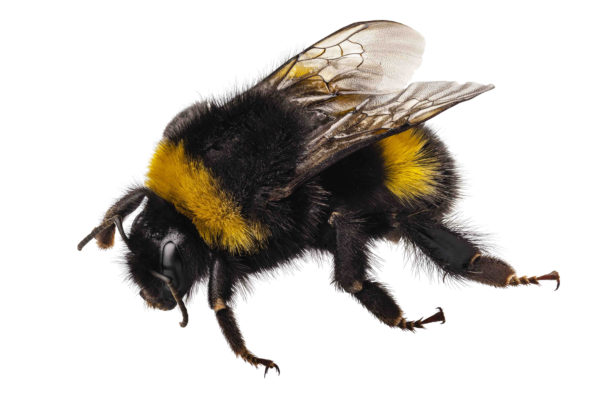
While there are several different species of bees in North America, we are going to look at bumblebees, honeybees, and carpenter bees.
Bumblebees are large, clumsy looking insects with oval shaped bodies. They are extremely fuzzy. They are yellow and black striped in color. They typically grow between 1/4″ and 1″ in length.
Honeybees are predominantly golden yellow with brown bands, but they can also be orange-brown in color. They have a very hairy appearance. They can grow to be about 1/2″ in length. They also have flat hindmost legs which are used to carry pollen.
Carpenter bees have a fuzzy body that is very robust in shape. Their bodies are yellow except for their abdomen which is shiny black. Males also have a white patch on their faces. Carpenter bees grow from 1/2″ to 1″ in length.
Bumblebees typically make their nests underground so their nests may not be visible. They will often make their nests in old mouse burrows or in dense clumps of grass. They have also been known to make their nests under woodpiles or behind the siding of homes. Bumblebees are found throughout the United States.
Honeybees typically make their nests in beehives, trees, hollow logs, and piles of logs. It is very common for them to get inside your home and nest in attics, wall voids, chimneys, and crawlspaces. Honeybees are found throughout the United States.
Carpenter bees create their nests in pieces of wood – preferably soft wood that has not been painted or sealed. They will often make their nests in decks, porches, roof eaves, wooden shingles, wooden playgrounds, in wooden outdoor furniture, and in sheds. The entry holes for carpenter bees are perfectly round.
All three species of bees feed on nectar and pollen from flowering plants. Contrary to popular belief, carpenter bees don’t actually eat the wood they burrow in to make their nests.
Female bumblebees have stingers but males do not. Bumblebees are not significantly aggressive but they will sting if they feel threatened. Their sting can be dangerous to humans with an allergy.
Honeybees are the only bee colonies that can survive for many years. They are very social insects. Female honeybees have stingers but males don’t. The female stinger is barbed which means it is only able to sting once. Honeybees aren’t known for being aggressive but they will sting if they are directly attacked.
Carpenter bees are very solitary insects and don’t create very large nest. Female carpenter bees have stingers but males don’t. Their sting is strong enough to cause a reaction in humans. Female carpenter bees are docile and rarely sting unless they are directly attacked. Male carpenter bees are very aggressive but don’t have stingers to do harm with.
All bees are protected as pollinators so treatment is only provided when they are deemed to be a nuisance or a threat. Removal is always the first treatment option because of this protected status.
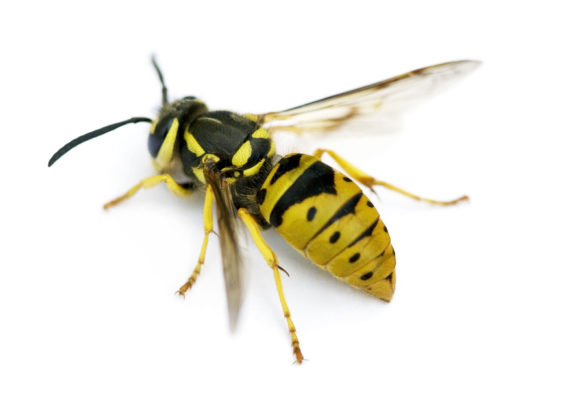
Yellow jackets have a sleek appearance. They are not fuzzy. They are black and yellow striped in color. They can grow to be 3/8″ to 5/8″ long.
Yellow jackets build their nests either high up or in the ground. Their elevated nests can be found in the walls of buildings or in attics and chimneys. Their ground nests are usually in areas that lack vegetation or in spaces next to the entrance of buildings.
Yellow jackets feed on other insects. They also eat any sweets and proteins that they come across. You can often find yellow jackets at outdoor events because they like to feed on sugary food scraps and drinks that are left out.
Yellow jackets have a smooth stinger which allows them to sting multiple times. They are usually docile unless their nests are approached. Then they become very aggressive and will sting repeatedly. Their sting can be life threatening if you are allergic. Yellow jackets are beneficial both as pollinators and because they help control the population of nuisance insects.
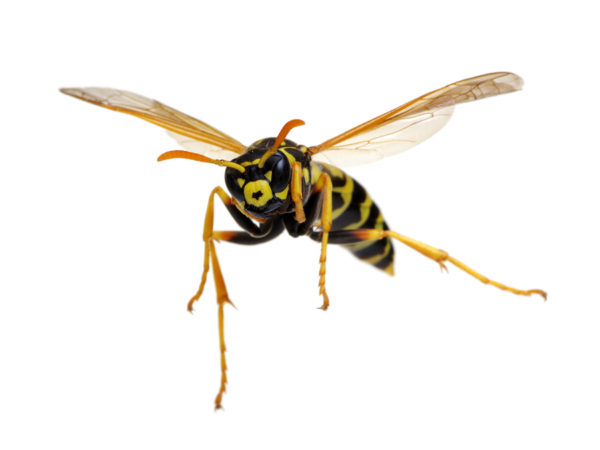
Paper wasps have a sleek appearance with a pinched waste and long, thin legs. They have gray wings and their bodies are black or brown with yellow or orange markings. Paper wasps can grow to be 5/8″ to 3/4″ in length.
Paper wasps are found throughout the United States. They will build their nests of the ground on any horizontal surface they can find. Their nests are commonly found hanging from trees, shrubs, porches, decks, roofs, outdoor grills, and door frames. Their nests resemble an umbrella attached by a stem. Their name comes from the paper-like nests that they build.
Paper wasps are predatory insects and feed on a wide variety of insects and spiders. They also eat nectar and pollen.
Paper wasps have smooth stingers that allow them to sting multiple times. They are not typically aggressive but will sting to defend their nests. Paper wasps have facial recognition capabilities like humans and chimpanzees do. They can actually recognize the faces of their colony members.
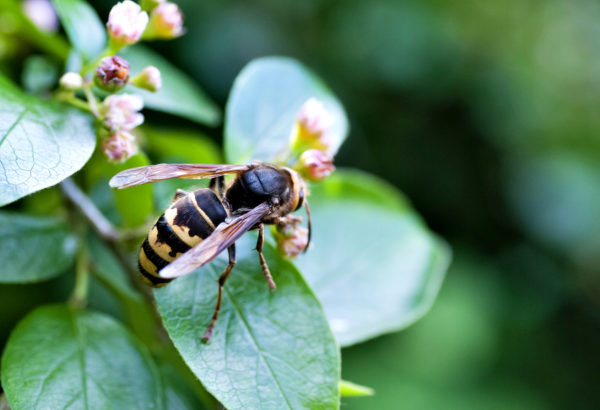
Hornets are much bigger than wasps. They are almost completely black except for an off white pattern on their face. They are long and thin with wasp-like bodies. They can grow from 3/4″ to 1-3/8″ in length.
Hornets are found throughout the United States. Hornet colonies only survive for 1 year. They build aerial nests that can be found in trees, on utility poles, on the side of homes, and under eaves. Hornet nests can be more than 14″ around and more than 24″ long.
Hornets are pollinators. Adults have a liquid diet that mostly consists of nectar and plant juices. They are also predatory and will prey on insects that they bring back to their nests to feed their larvae.
Hornets have a more painful sting than wasps do. A single hornet sting can be fatal if the victim is allergic. When hornets sting or feel threatened, they give off a pheromone that signals the rest of the colony to attack as well.
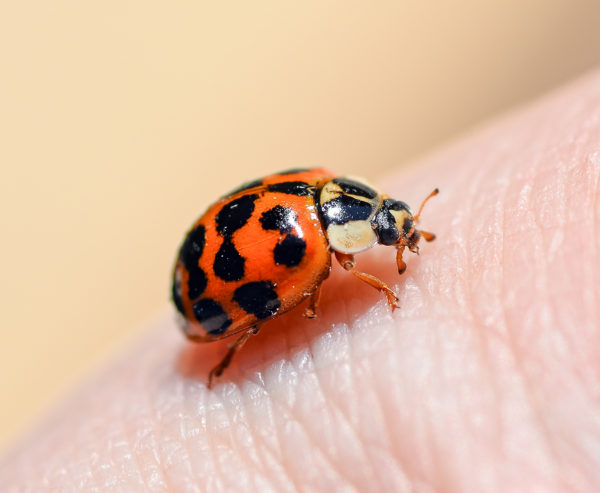
Ladybugs have a distinctive appearance. They are bright red, orange, or yellow with black spots. Their bodies are oval and dome shaped.
Ladybugs are found worldwide. There are over 5000 species total and 450 species in North America. Ladybugs live outside in gardens and landscaped areas. They aren’t able to tolerate cold weather so in the fall they will invade homes in search of a place to overwinter. They will typically gather on windowsills or you will see them crawling along walls. They tend to end up in attics, under flooring, and in wall voids.
Despite their appearance, ladybugs are predatory insects. They feed on a variety of other insects, helping to keep nuisance populations down.
Ladybugs secrete a substance wen they are threatened that makes them taste bad to their predators. They can also play dead if they feel threatened.
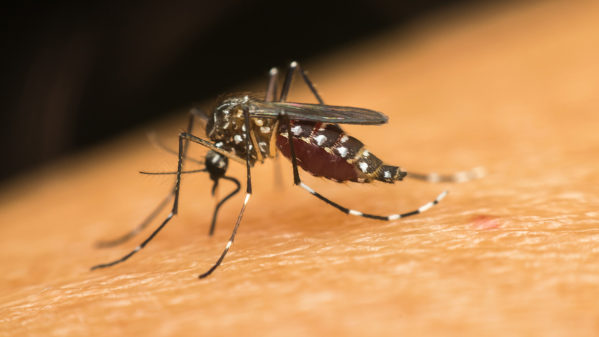
Mosquitoes have narrow bodies with long thin legs and transparent wings. They have gray bodies with white stripes on their abdomen. They also have long beaks that allow them to penetrate the skin. Mosquitoes can grow to be 1/4″ to 3/8″ long.
Mosquitoes can be found in almost every landscape environment on earth with the exception of deserts and the arctic. Mosquitoes are most often found near stagnant water as this is where they lay their eggs. They are often found on the edges of streams, lakes, and ponds; near wading pools; old tires; bird baths; tarps; piles of trash; clogged gutters; and wheelbarrows.
Mosquitoes feed on nectar and plant juices. Female mosquitoes bite to feed on blood.
The species of mosquito determines when they are most active. Some species are more active in the daytime while others become active at dark. Mosquitoes are capable of transmitting several diseases and pathogens to both humans and animals. Mosquitoes can transmit West Nile virus, Zika virus, Chikungunya fever, malaria, and canine heartworm among others.
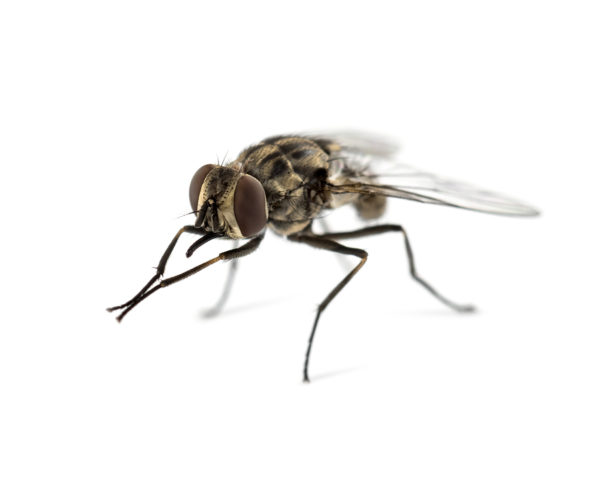
Houseflies have a very distinctive appearance. They have dull gray bodies with vertical lines on the top, a single gold stripe, and a silver stripe on their face. They can grow to be 1/8″ to 1/4″ in size.
Flies can be found in most homes. They enter through tears in screens, gaps around windows and doors, doors and windows that have been left open, and cracks in the foundation. They are attracted to homes by garbage, animal feces, compost piles, and leaky pipes. They will often rest on your floors, walls, and ceilings.
Houseflies are scavengers that eat a variety of different foods. They will feed on food found in pantries and kitchens, pet food, carcasses, garbage, or excrement. Houseflies are only able to eat liquids but they are able to turn many solid foods into liquid form so that they can eat it.
Houseflies can spread diseases when they land on your food or your food prep areas. They are the most common fly found in homes and only live from 15 to 25 days.
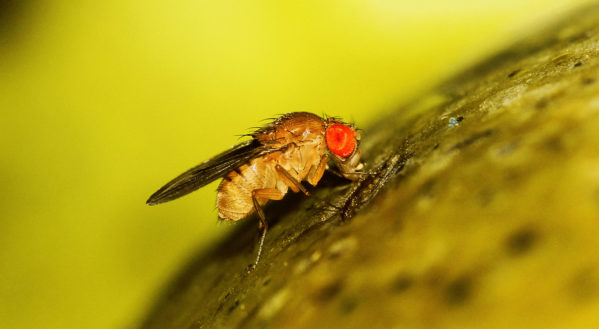
Fruit flies are extremely small in size, only getting about 1/8″ in length. They are usually brown, tan or black with distinctive red eyes. They are too small, however, for you to determine their color with the naked eye.
Fruit flies are found throughout the United States. They are usually seen in the kitchen, especially around fruits and vegetables. They live outside in spring and summer. They enter homes as hitchhikers on fruits and vegetables that we buy from stores that are already infested. They can also enter through small spaces in widows, doors, and walls. They are attracted by large gardens, compost piles, and fruit trees.
Fruit flies feed on very ripe fruits and vegetables like bananas, strawberries, melons, cucumbers, potatoes, and more. They also feed on fermented liquids like vinegar, cider, and beer.
Fruit flies are a nuisance. They enter your home in large numbers and are very difficult to eliminate. They can carry dangerous that can be transmitted to humans.

From tiny mice in the colder months to mosquitos in the summer, every season seems to bring a new pest to bother you and your family. We feel it is best to always have a contact near your home that can help to eliminate the pesky pests that may show up in or around your home. Aside from Northwest, check out the top four companies near Rome, Georgia that can help keep your home pest free. 
It is important to rid your home of pests for several reasons, but most importantly because pests can spread diseases and cause unfortunate damage to your home. Termites alone cause over one billion dollars in damage each year in the U.S., and mosquitos are known for carrying diseases that are transmitted through their bite.
When selecting a pest control company for your home, one of the best ways to choose the right company for you is by reading customer reviews. From sites like Angie’s List to social media networks, online reviews give you a glimpse into the company before you hire. You can also run a quick Google search to determine if they offer options like Green Pest Control, other home services, or appointment availability. It’s important that you feel confident in who you hire to get the job done!
At our Northwest Rome location, we like to evaluate a home for any issue that could cause a concern for the home owner. While inspecting your home inside and out, we check for any wildlife concerns, insulation needs, lawn conditions, and pest issues you may be experiencing, while offering relief to all those concerns and more. With over 60 years of pest control experience, we like to ensure that every customer gets to fully enjoy one of their largest investments.
Overall, pest control is personal. No matter your home needs, there is a company out there that is right for you! Have any questions? Northwest Exterminating is always available to answer any questions you may have about your type of pest and solutions available. Give us a call at (888) 466-7849 or request a free estimate using the form on this page.
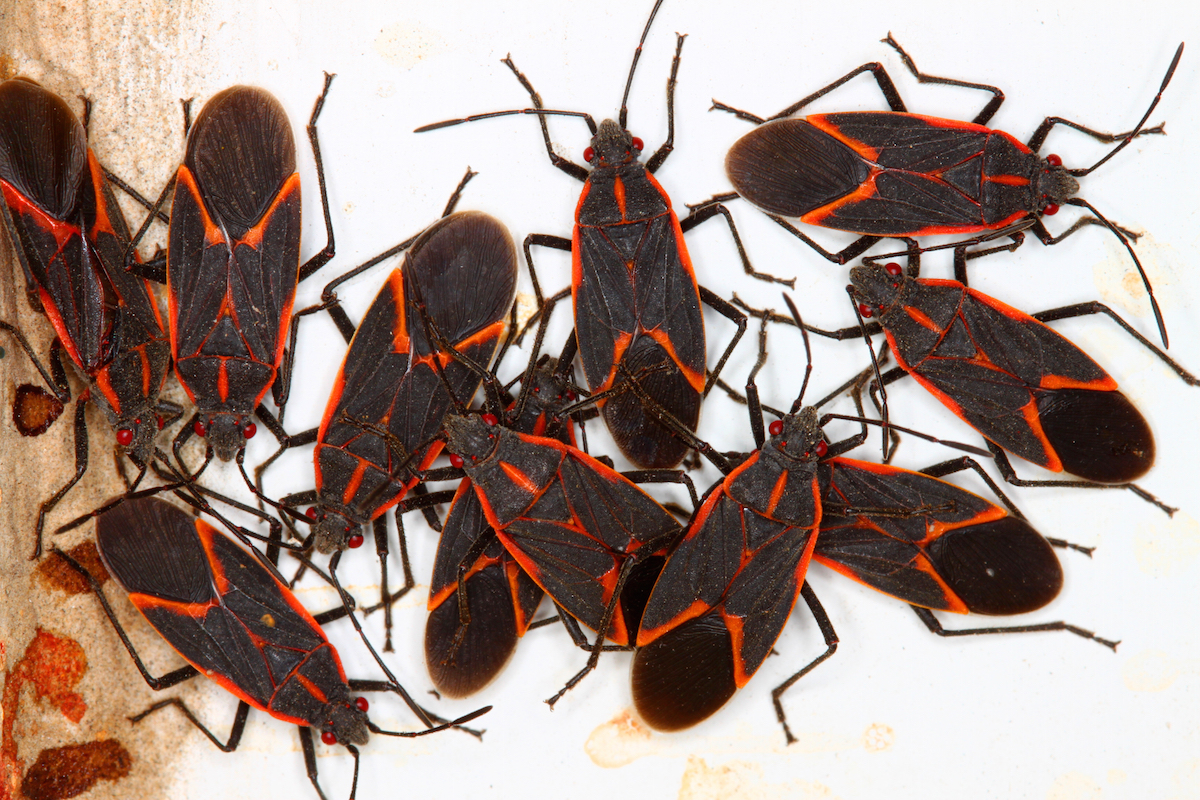
You may have walked outside recently and come across a congregation of small black and red bugs either on your home or car. These are boxelder bugs or, as they are affectionately called in the south, “lovebugs”; one of the many overwintering pests we tend to encounter when the temperatures drop and take up residence on the south side of homes, vehicles, and rocks where the sun shines in abundance. The question is, should you be concerned?
Let’s break down what “overwintering” means and the process by how it affects bugs and your home. Overwintering is defined as the process of insects passing the winter seasons. In the warmer months, boxelder bugs reside and thrive in boxelder and silver maple trees. There they lay their eggs and feed on leaves and flowers.
Once temperatures start to drop, these bugs will migrate by the thousands out of the trees and take up residence on the south side of buildings and homes. Then, they either migrate to a nearby site to hibernate for winter OR make your home their hibernation spot for the winter season.
So, what’s the risk of a boxelder bug home invasion? While boxelder bugs are not known to bite, they may bite when threatened and puncture the skin, causing a slight irritation and leaving a mark, similar to a mosquito bite. They will also leave a reddish orange stain from their fecal matter that will add discoloration to fabrics when crushed.
If you’re having a boxelder bug problem, our Rome Northwest team is ready to help. A professional pest control plan has proven to be effective in controlling these overwintering pests when infested tress and the other areas around your home are treated with a residual pest control product. Schedule a free estimate to get started.